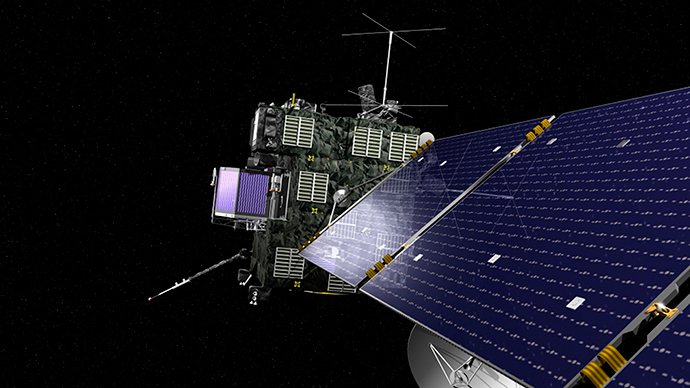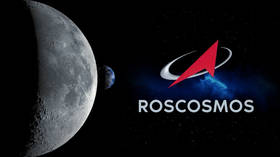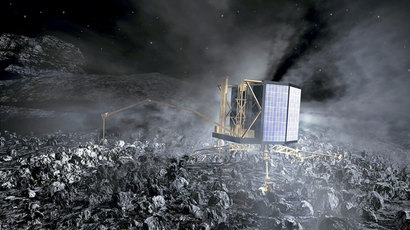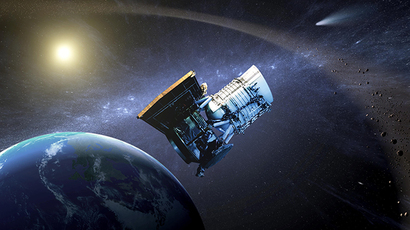Destination – comet: Scientists name site for Rosetta’s historic landing

The European Space Agency (ESA) has unveiled the spot where its comet-chasing Rosetta mission will attempt a perilous landing on a volatile space body, the agency said in a statement on Monday. It is anticipated as the first comet landing in history.
The Rosetta spacecraft’s Philae lander is to land on the
irregularly shaped 67P/Churyumov–Gerasimenko comet – currently
travelling through space some 440 million kilometers from Earth –
on November 11.
Five sites on the comet were previously identified by the ESA,
however only two were chosen suitable for landing as they pose
minimum risk to the lander compared to the other candidate sites.
Site J located on the ‘head’ of the comet, which in shape
resembles a rubber duck, will be Philae’s primary destination.

“The chosen site offers unique scientific potential, with hints of activity nearby, and minimum risk to the lander compared to the other candidate sites. The decision to select Site J as the primary site was unanimous,” said the agency in a statement.
“Site J in particular offers us the chance to analyse pristine material, characterise the properties of the nucleus, and study the processes that drive its activity,” said Jean-Pierre Bibring, a lead lander scientist and principal investigator of the CIVA instrument at the IAS in Orsay, France.
The second “backup” spot – Site C – is located on the ‘body’ of the comet.
Scientists said that the process of choosing a fairly suitable
landing site was an uphill task, since none of the candidate
sites “met all of the operational criteria at the 100%
level.”
“As we have seen from recent close-up images, the comet is a
beautiful but dramatic world – it is scientifically exciting, but
its shape makes it operationally challenging,” said Stephan
Ulamec, Philae Lander Manager at the DLR German Aerospace Center.
.@Philae2014 here’s some suggestions on what to pack :) http://t.co/uxROb5vIDEpic.twitter.com/XvUc4fEczZ
— ESA Rosetta Mission (@ESA_Rosetta) September 15, 2014
The search for the landing site could only begin once Rosetta
arrived at the comet on August 6 and
scientists were able to get a close-up for the first time.
Rosetta is scheduled to release the 100-kilogram Philae lander in
mid-November. The lander will then glide down to the surface of
the icy body.
READ MORE: 10-yr space chase: Rosetta finally catches up with her comet
“When it touches down, two harpoons will immediately be fired
into the comet’s surface – almost simultaneously. The lander feet
are equipped with ice screws that will be pushed into the
surface. During the landing, a cold gas thruster will fire from
the top of the lander and push Philae down onto the comet
surface,” said Ulamec, according to the German Space agency
DLR’s website.
He added that the landing will be perilous as there are various
things that could go wrong. Technical failures could occur, or
the comet’s volatile environment could cause problems.
Got some red-green glasses? Check out this ‘3D' view of Site J! http://t.co/E6ZJnjvxlu#67Ppic.twitter.com/RxZG7HLa8R
— ESA Rosetta Mission (@ESA_Rosetta) September 15, 2014
The first surface research of a comet aims to use scientific data
collected from the rock to gain a better understanding of the
complex processes which led to the birth of our solar system,
scientists said.
“We will make the first ever in situ analysis of a comet at
this site, giving us an unparalleled insight into the
composition, structure and evolution of a comet,” said
Bibring.
As the most primitive objects in the Solar System, comets have
remained mostly unchanged since they were formed and carry
essential information about our origins.
The Rosetta mission gets its name from the famous Rosetta stone,
which led to the deciphering of Egyptian hieroglyphics almost 200
years ago. Similarly, scientists hope that Rosetta will unlock
the mysteries of how the Solar System evolved.














